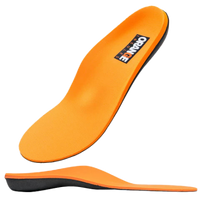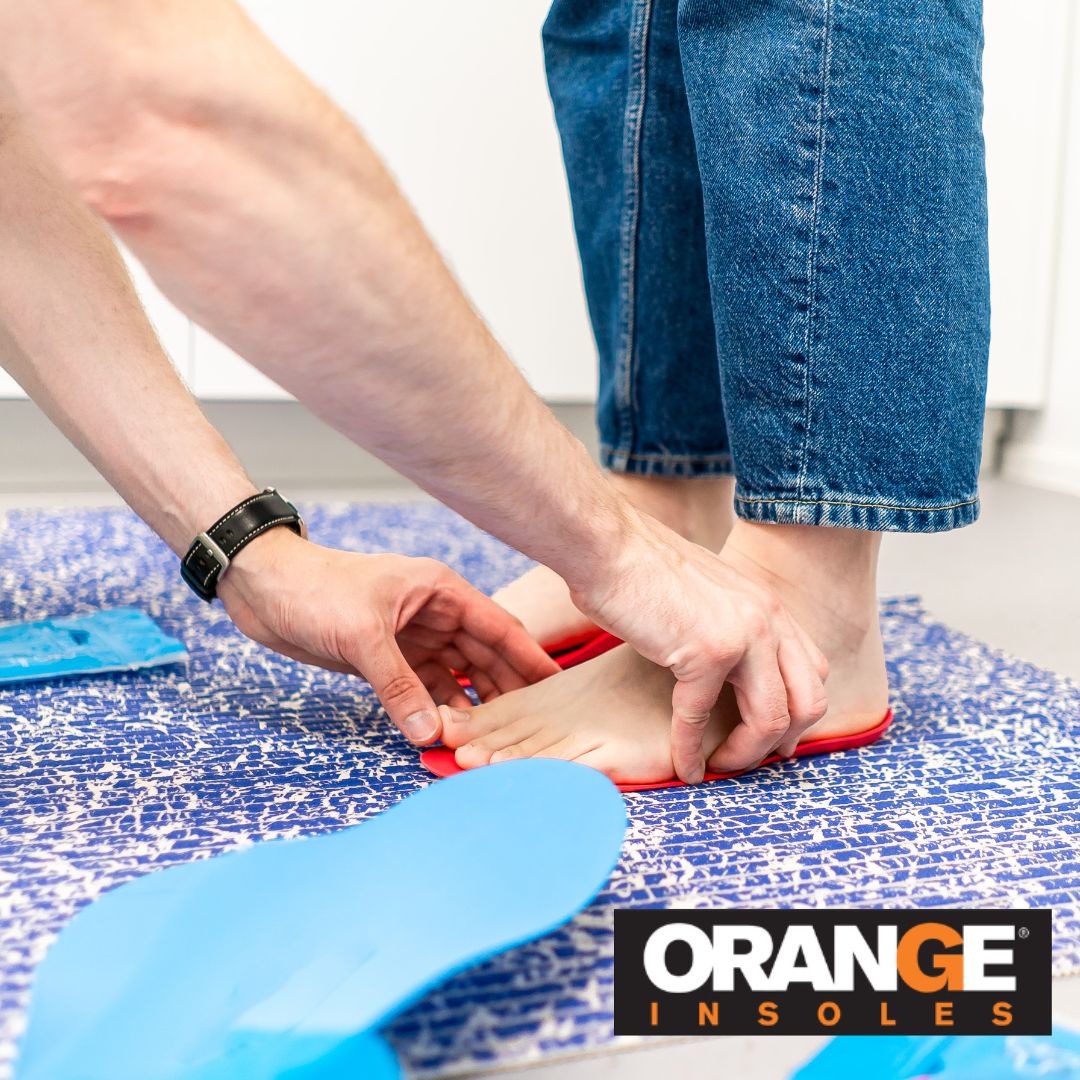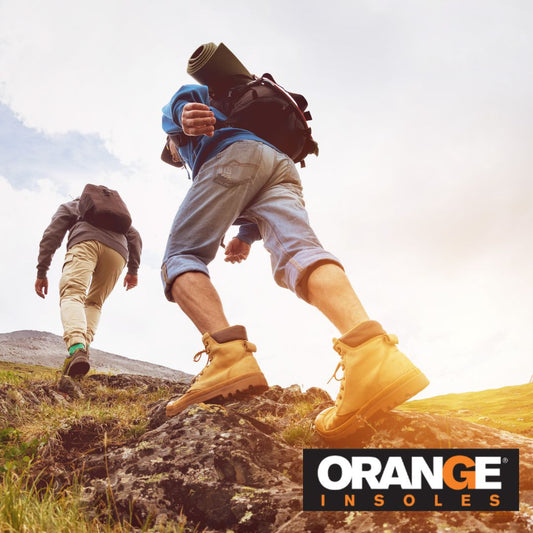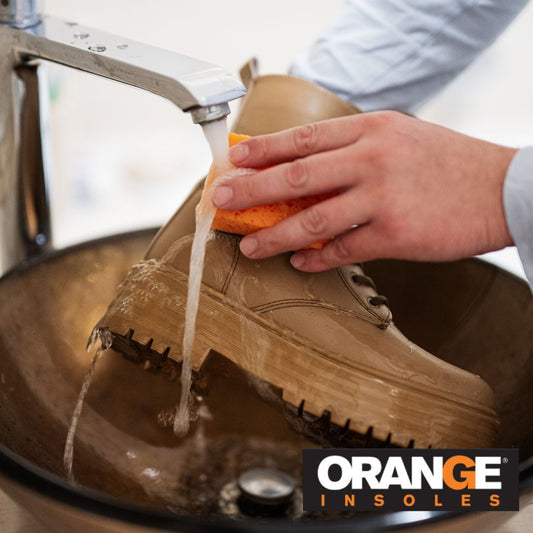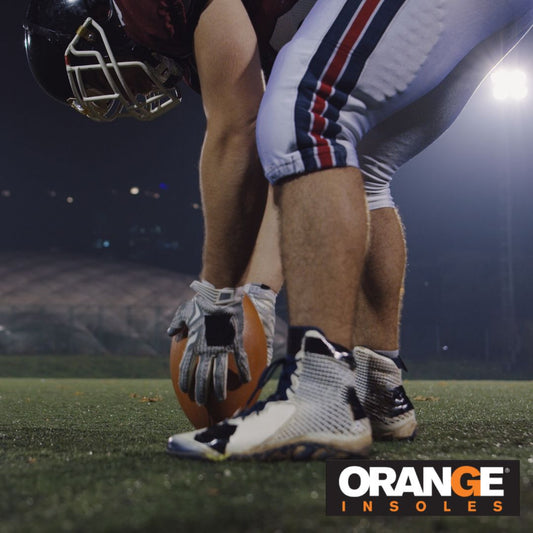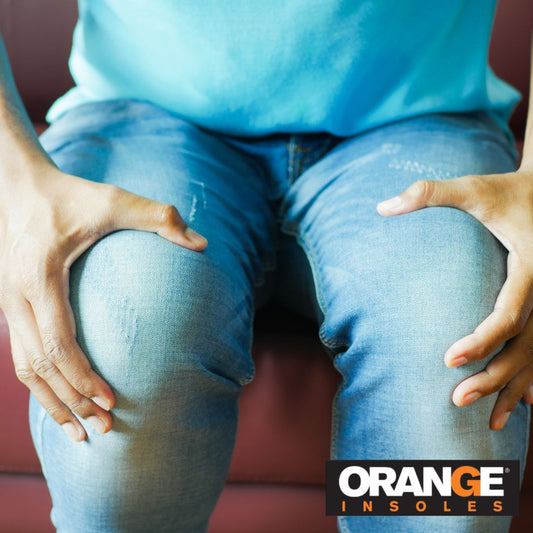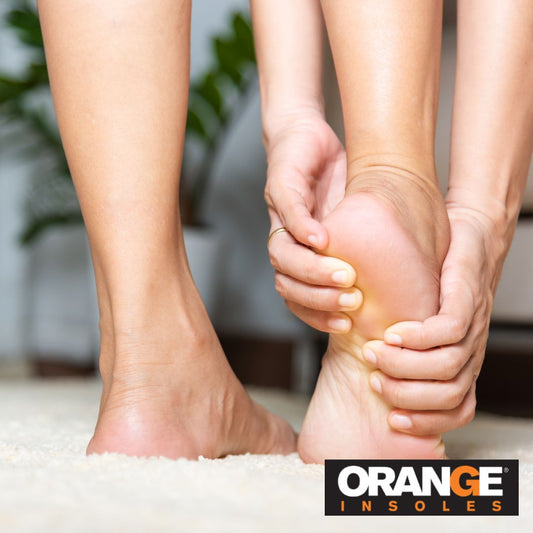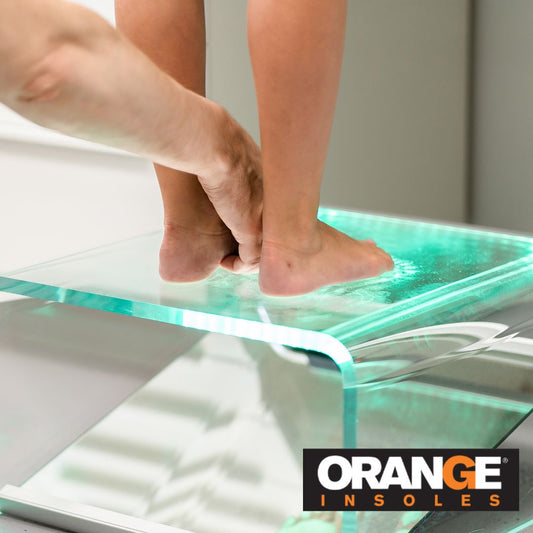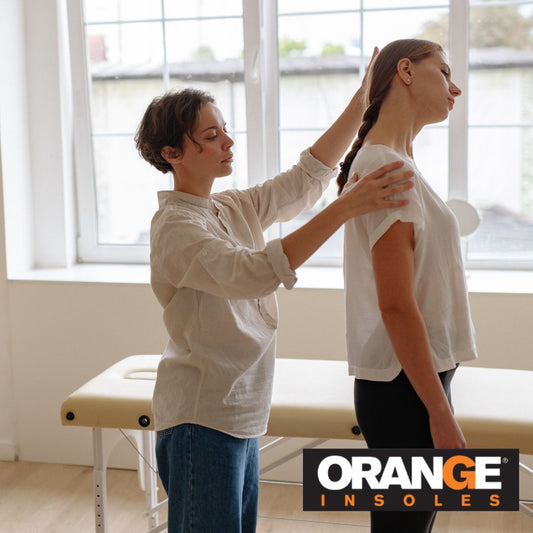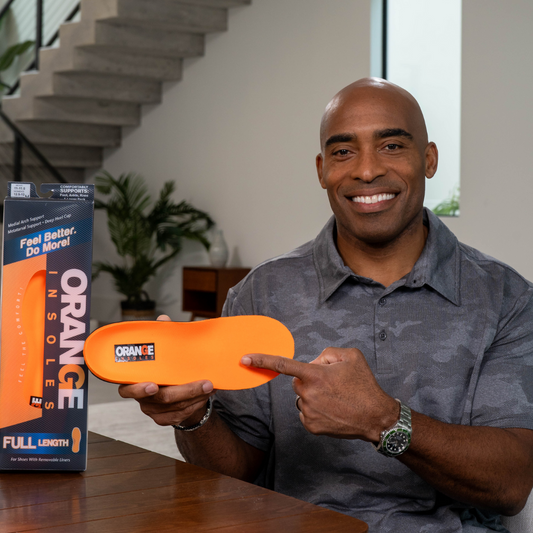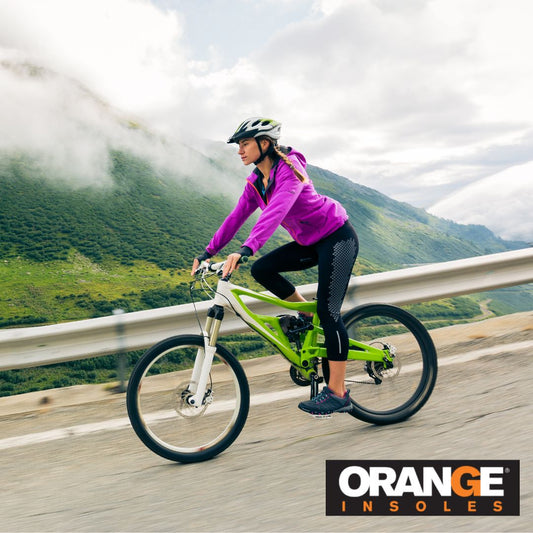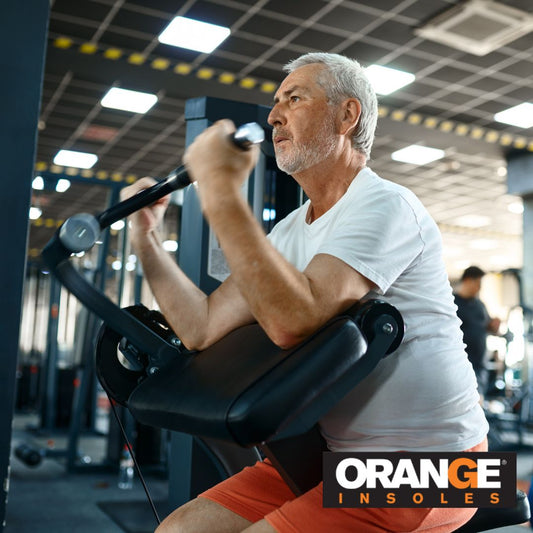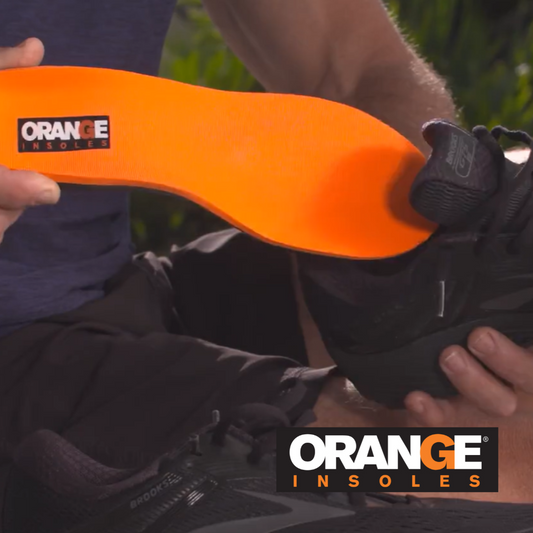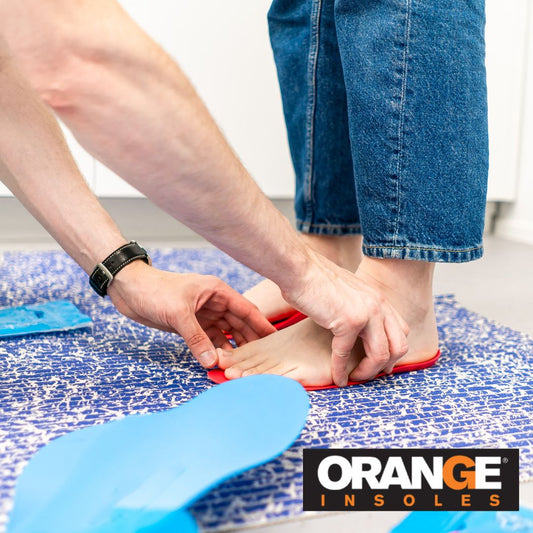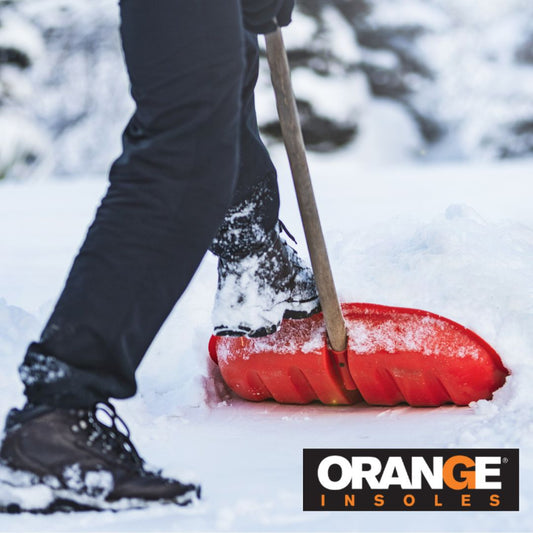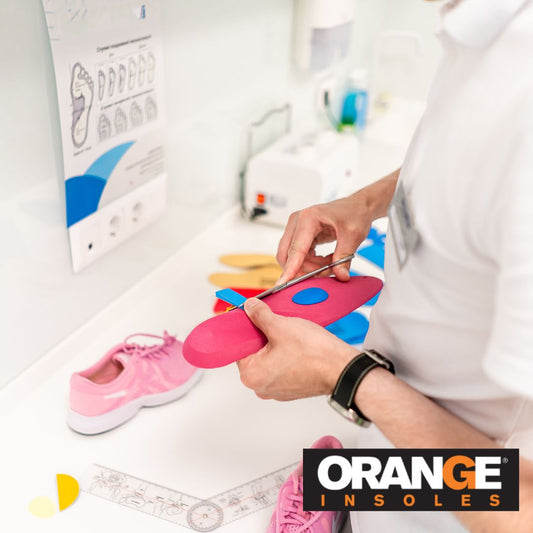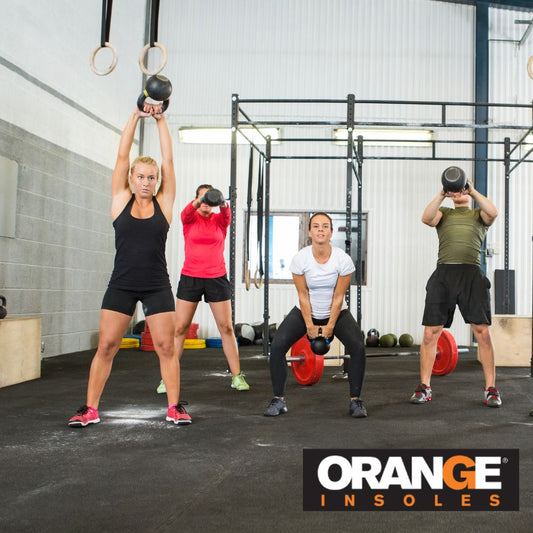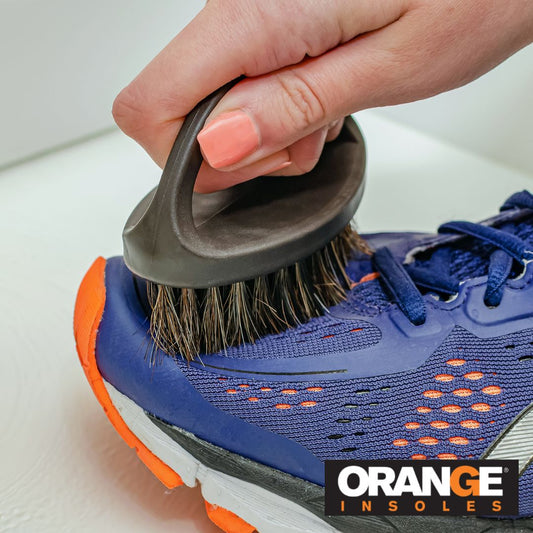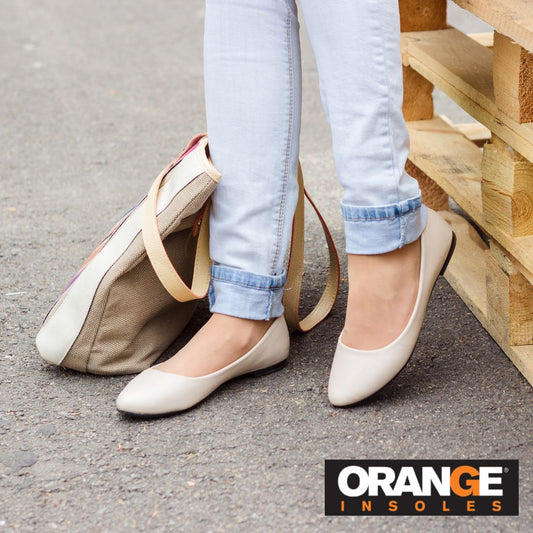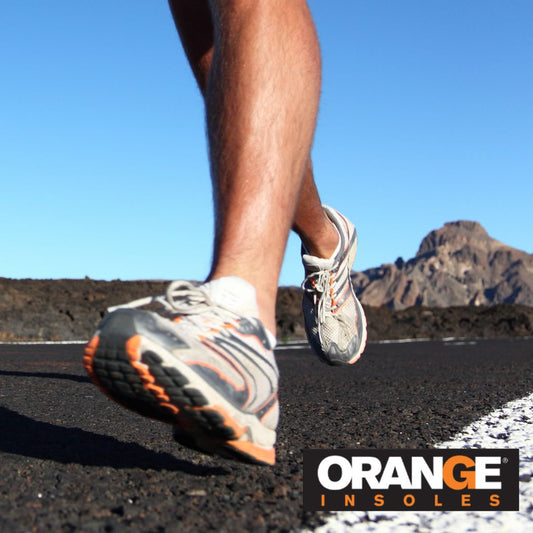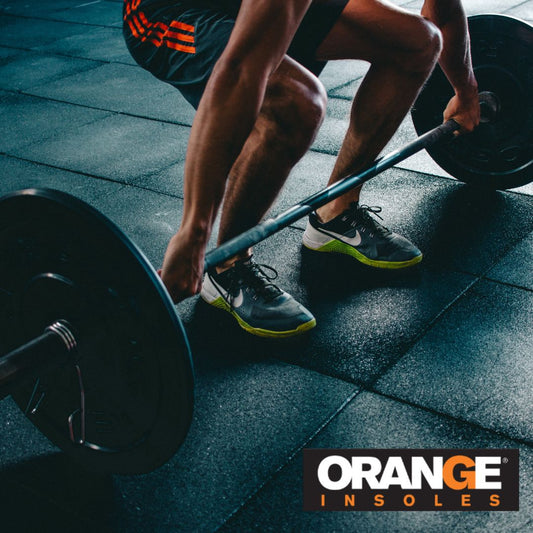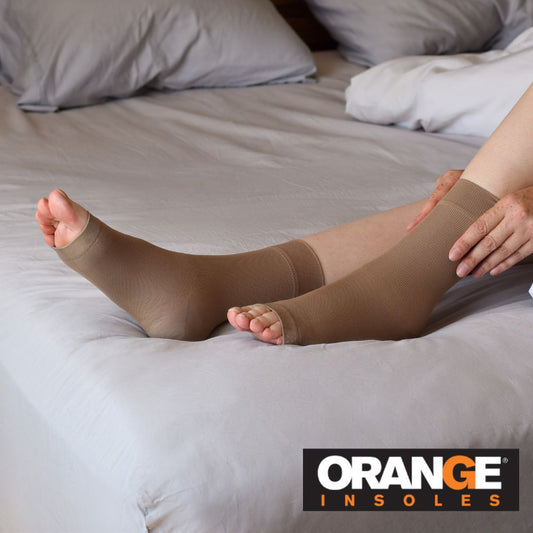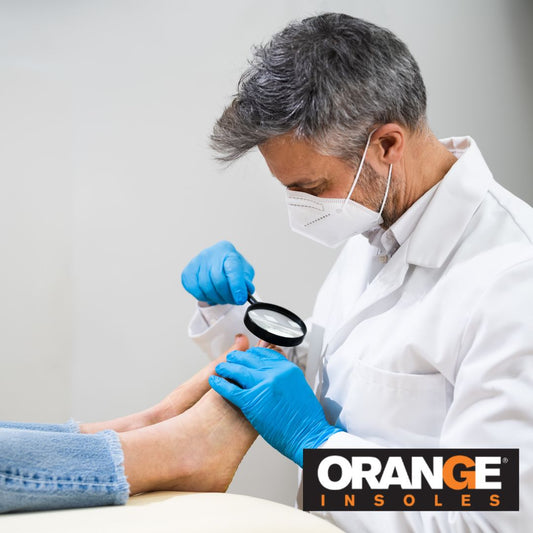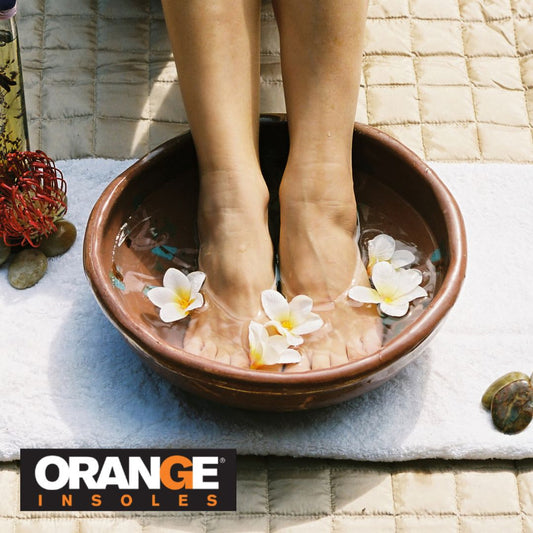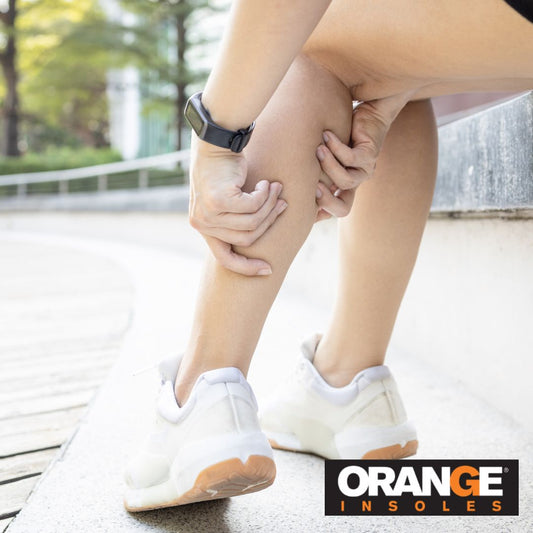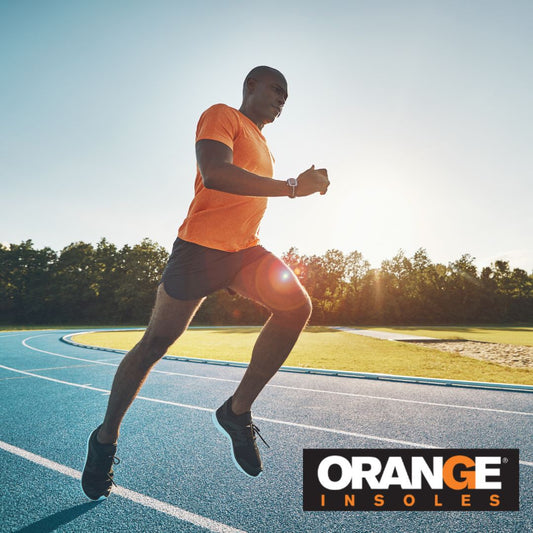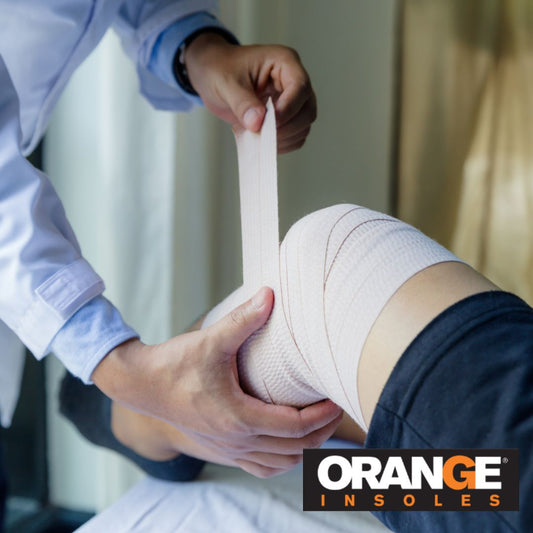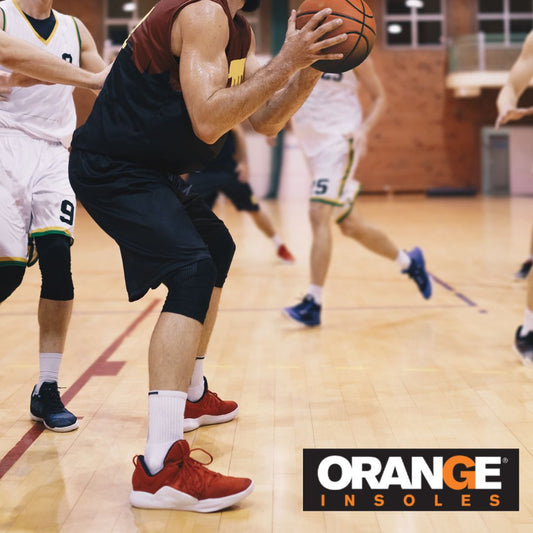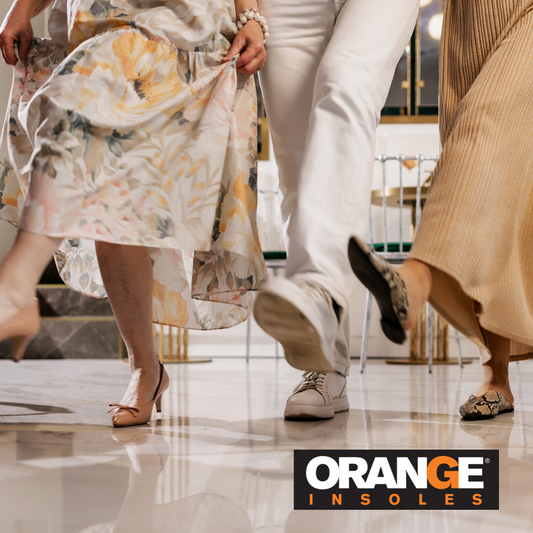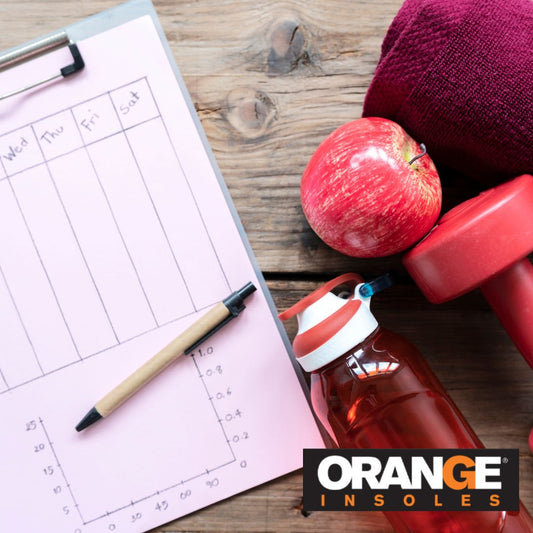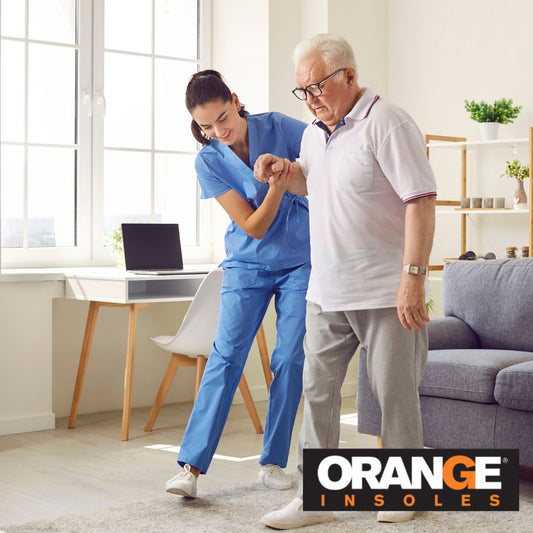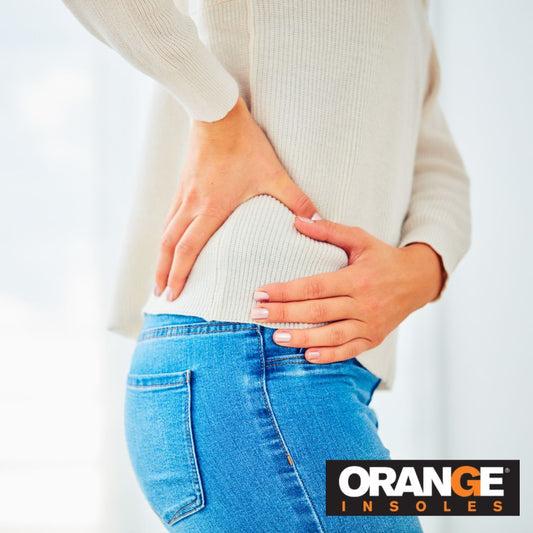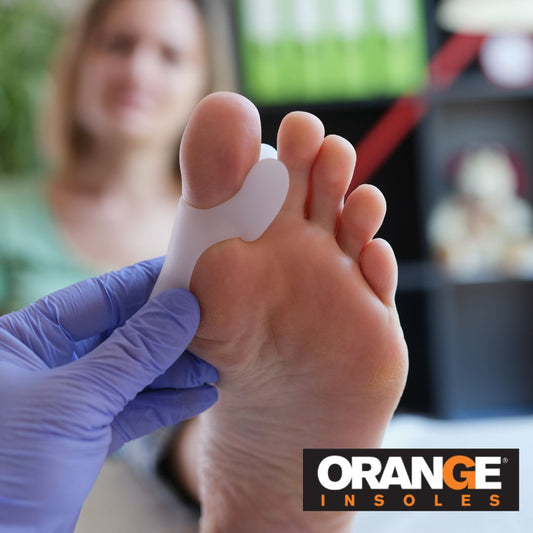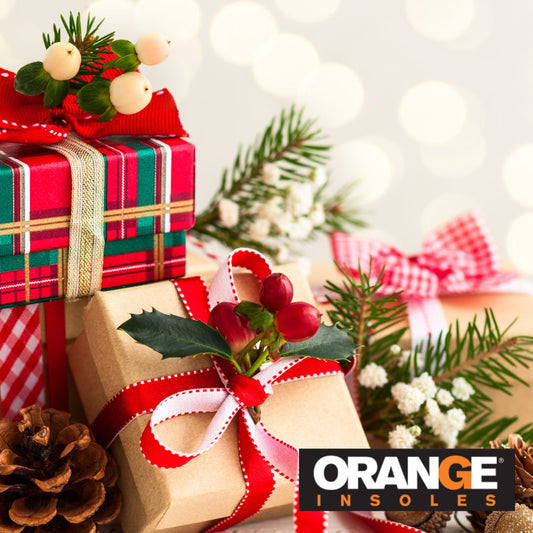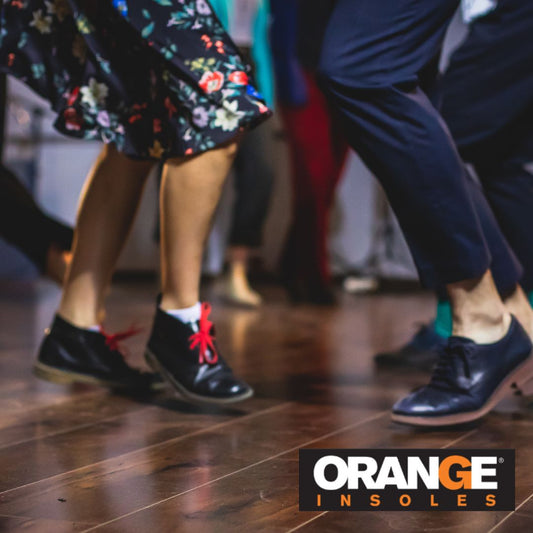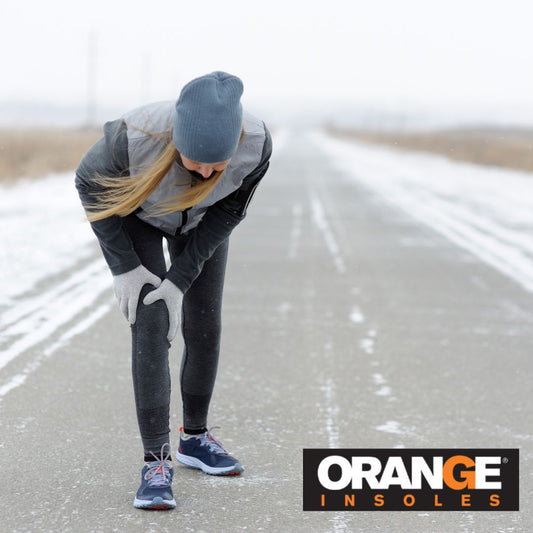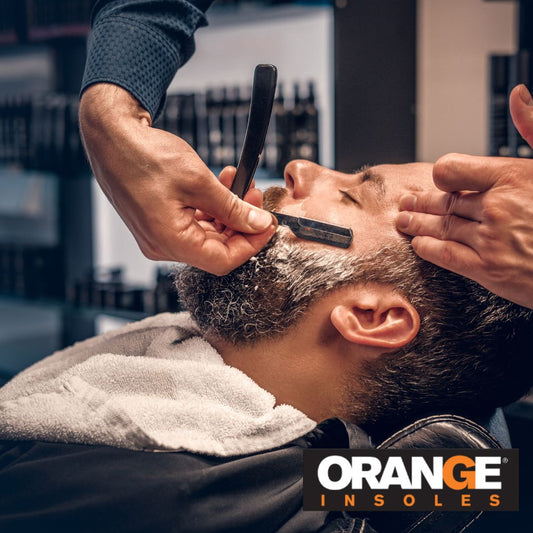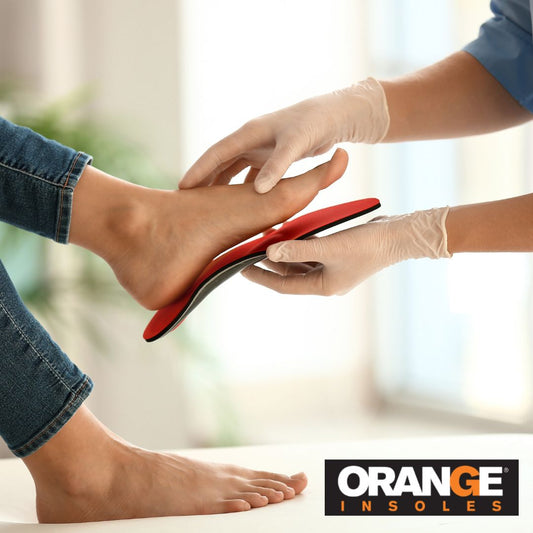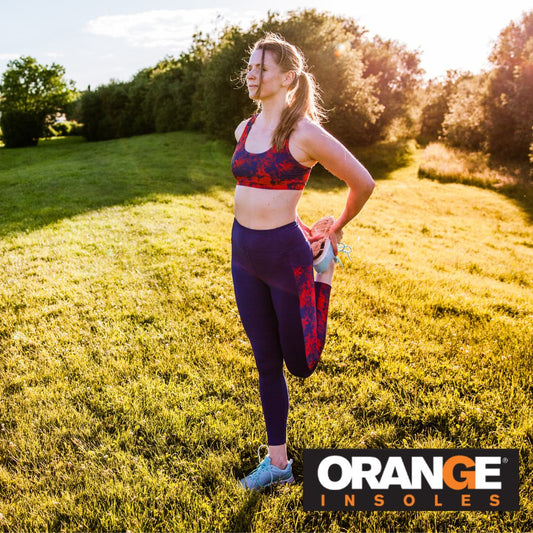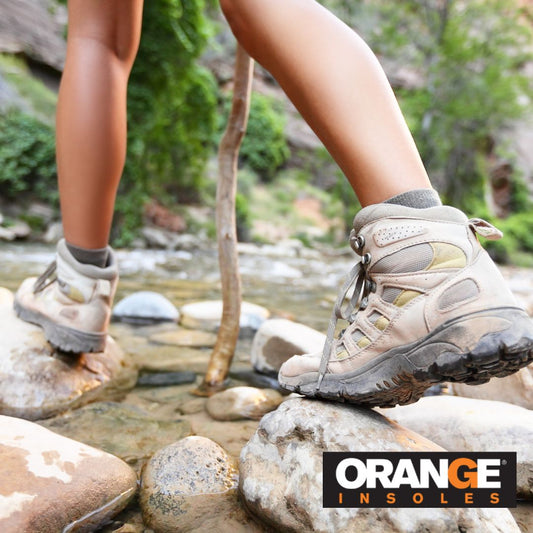The terms "insole" and "shoe liner" are often used interchangeably, but their uses are not interchangeable.
When it comes to support, pain prevention, and long-term benefits, they are very different both in design and purpose. Let’s take a look at the differences between an insole, specifically an Orange Insole, and liner (also known as a sock liner).
Sock Liner
A shoe liner, also known as a sock liner or footbed, is the thin layer inside a shoe that sits directly beneath the foot. It's primarily designed for comfort and to provide a barrier between the foot and the shoe. Its basic purposes are often simply to cover the stitching in the bottom of the shoe, control the odor in your shoes and reduce the moisture inside.While these are super helpful, when you look at the structure of a liner, you can see it’s not going to provide much support.
Materials: Shoe liners are usually made from softer, thinner materials than insoles, such as fabric, foam, or thin leather.
Structure:
-
Surface Layer: Soft and designed to be gentle against the foot.
-
Minimal Padding: Provides a slight cushioning effect but less than an insole.
- Flat or Slightly Contoured: Generally flat, with minimal contouring compared to insoles.
Orange Insole
An insole is a removable layer inside a shoe that provides cushioning and support to the foot. It's designed to enhance comfort, absorb impact, and improve the fit of a shoe.
Read more: Insoles Vs Liners Vs Orthotics
Orange Insoles takes all the pros of a shoe liner while also preventing pain and injuries, adjusting your gait, and evenly distributing the weight of your body across your foot.
Structure:
- Medial Arch: One of the biggest differences you’ll see between a liner and an insole, is the medial arch. the medial arch support on Orange insoles is actually made to replace (and improve upon) the shoes current liner. It works to fix overpronation, a condition that can lead to:
- Hip pain
- Forefoot pain
- Strain on the Achilles tendon
- Knee issues
- And more
-
Deep Heel Cup:The deep heel cup in an Orange Insole is made of a polyurethane base and provides stability (keeps the foot in place) and natural shock absorption.
-
Plastic Molding: While many think a soft, cushioned insole is best, support is actually more important and a soft base is not going to help realign your body. Our insoles are made of a plastic molding that creates a strong medial contour and metatarsal lift for alignment and weight distribution. Combined with high impact EVA foam, your foot is both cushioned and supported from heel to toe.
- Metatarsal Pad: The built in metatarsal pad for the Orange Products (all 3) works to disperse pressure on your metatarsals to further prevent forefoot, bunion and ball-of-the-foot pain.
The biggest difference between a liner and an insole is going to be the end result. While liners are thin and are primarily meant for comfort, insoles are used for additional support, comfort, and foot health. They can help prevent pain, improve alignment, prevent long-term foot issues, and even ease pain through your body.
Find Out Which Insole Is For You
If you’re looking to feel better and do more, add an Orange Insole to your athletic, every day, or dress shoes! And don’t forget to remove that liner!
